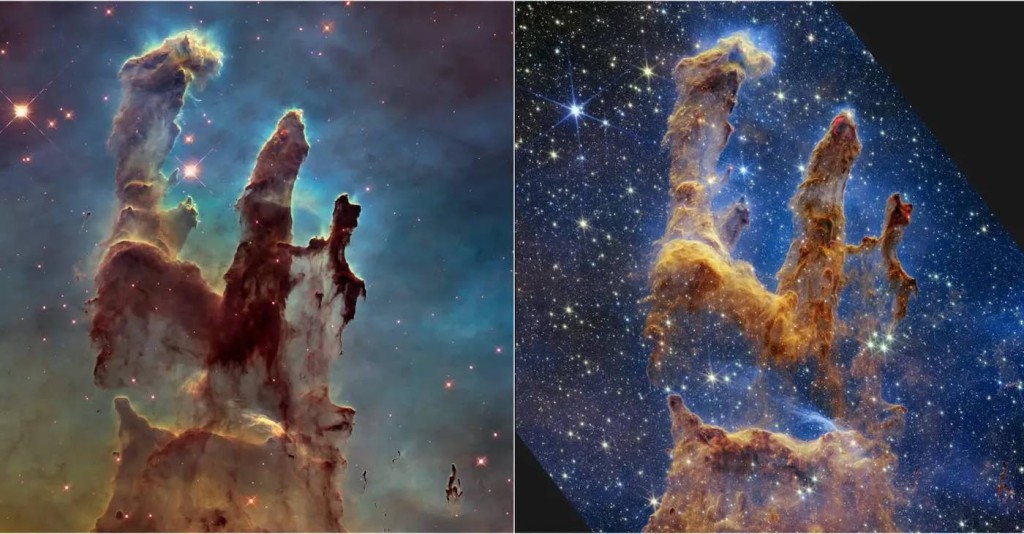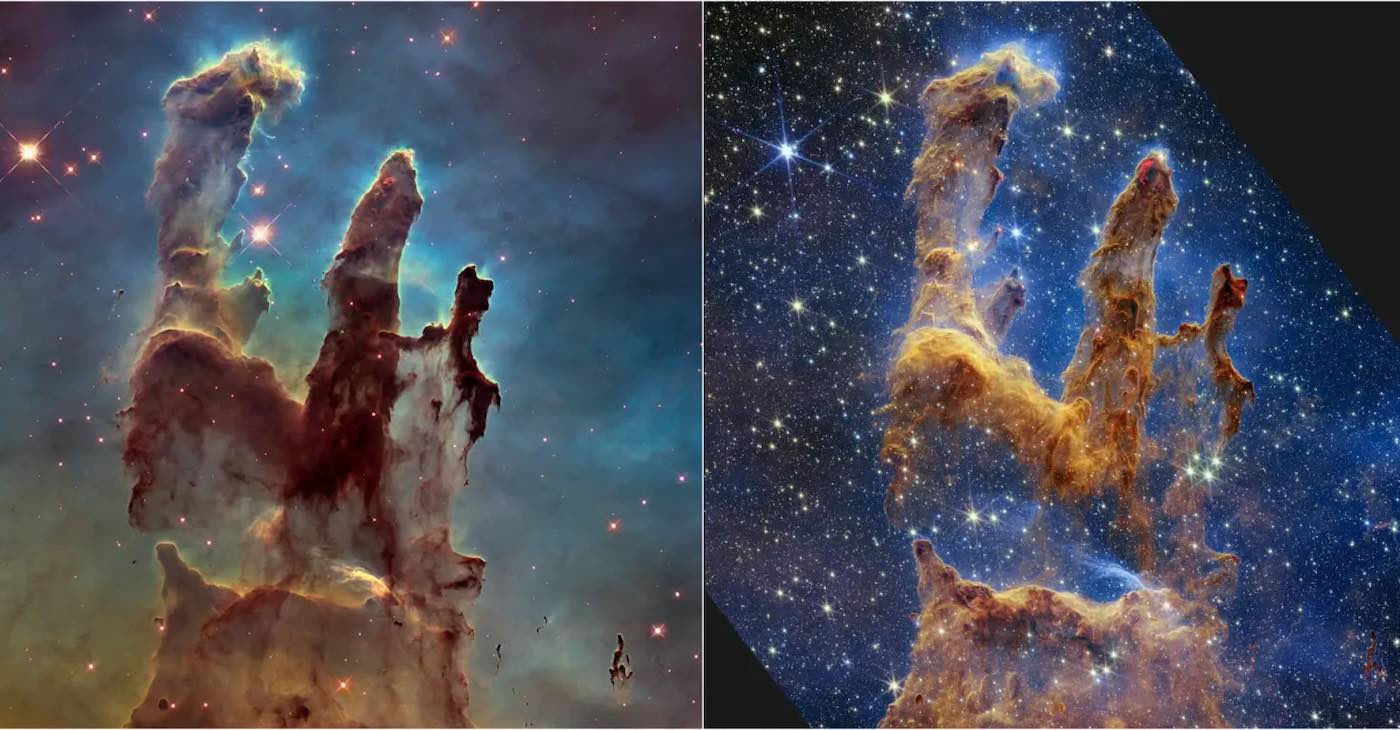
The James Webb Space Telescope has been a heck of a software update. Just look at this iconic space feature, the Pillars of Creation.
The left side image was made by the Hubble telescope, while the right-side image was taken with Webb’s near-infrared camera (NIRCam), revealing so much more celestial activity.
Newly formed stars pop out in shades of pink, red, and crimson. Still-forming stars that remain hidden deep in the dusty pillars resemble molten lava, and fully formed blue and yellow stars sprinkle the scene.
Located in the Eagle Nebula, around 6,500 light years away, the Pillars of Creation have iconized space telescope imagery. The largest pillar is so big, it would take four light years to go from tip to tail. They are mostly made of cold hydrogen despite their fiery appearance.
Two images were made of the Pillars, the first in 1995, and the second in 2014. This new one illustrates just how big of an upgrade the infrared vision that Webb brings to bear can be when imaging dense areas of the cosmos.
The new stars lying outside of the dusty pillars are perhaps a few hundred thousand years old, and appear as bright red orbs typically with diffraction spikes. When knots with sufficient mass form within the pillars of gas and dust, they begin to collapse under their own gravity, slowly heat up, and eventually form new stars.
Although it may appear that near-infrared light has allowed Webb to “pierce through” the clouds to reveal great cosmic distances beyond the pillars, there are almost no galaxies in this view. Instead, a mix of translucent gas and dust known as the interstellar medium in the densest part of our Milky Way galaxy’s disk blocks our view to much of the deeper universe.
WATCH: Travel 2,000 Light-Years in 60 Seconds With New Video From NASA’s Webb Telescope
A closer look at the edges of some pillars reveal fiery red, wavy lines. These are ejections from stars that are still forming within the gas and dust.
Young stars periodically shoot out supersonic jets that collide with clouds of material, like these thick pillars. This sometimes also results in bow shocks, which can form wavy patterns like a boat does as it moves through water. The crimson glow comes from the energetic hydrogen molecules that result from jets and shocks.
The new image will update astronomer’s star-formation models.
WATCH a video tour of the image from the Webb-site…
SHARE This Latest Webb Imagery With Your Friends…




















